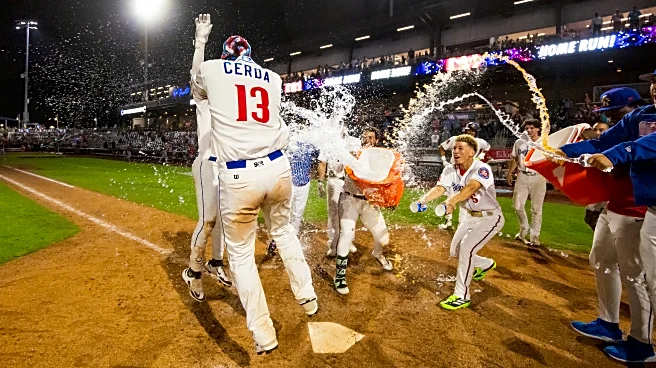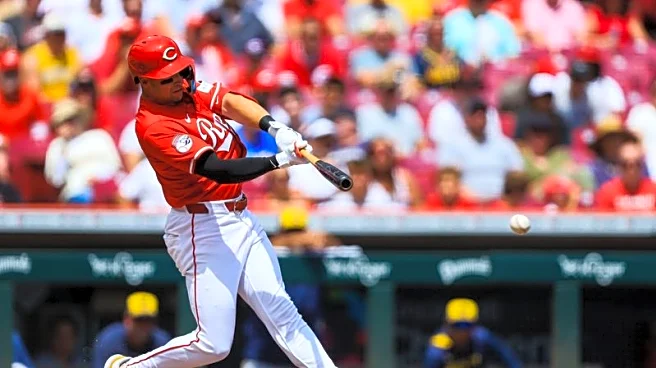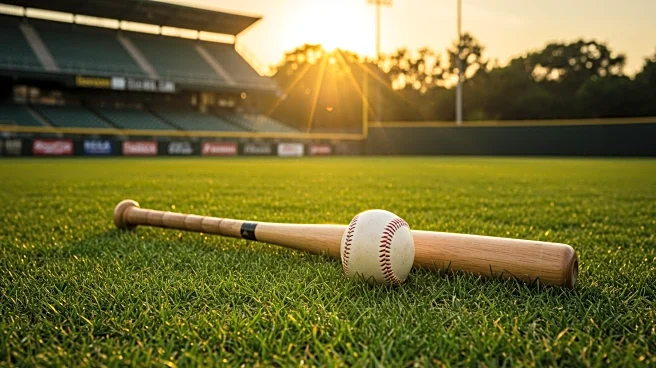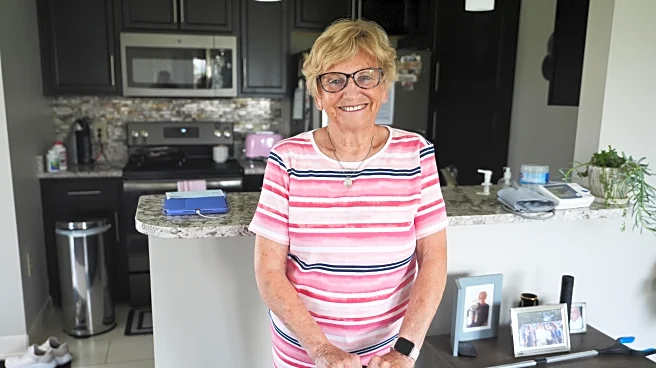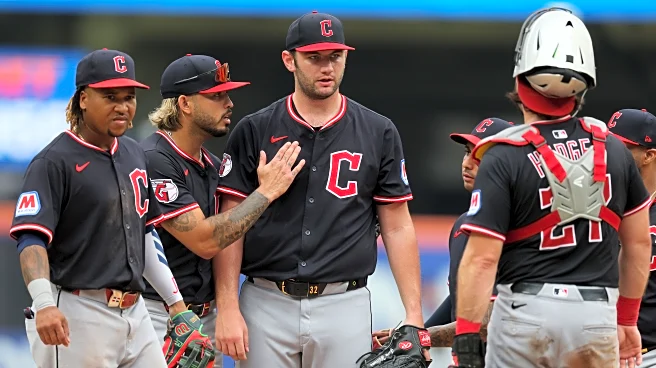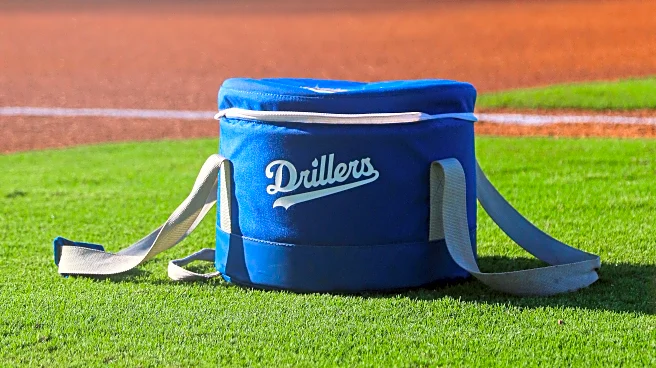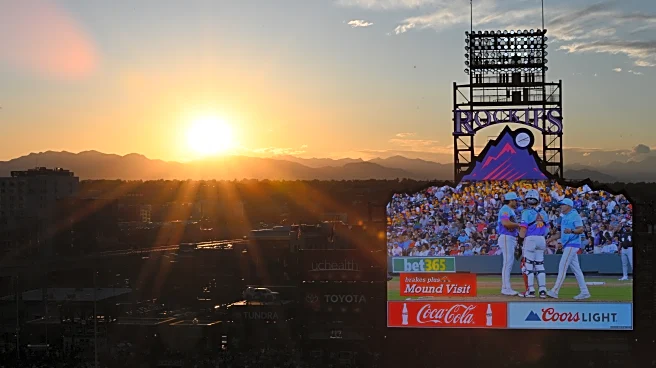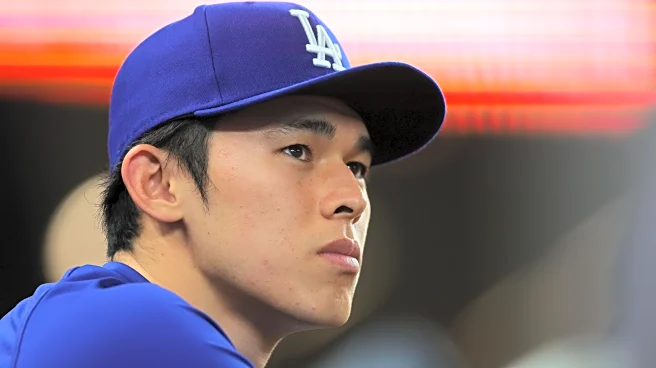
The Week That Was
Reno extended their losing streak to ten games as they were swept. They’ve now fallen 16.5 games behind Tacoma and El Paso, and that in a span of just 45 games. But things were better elsewhere. Amarillo won four of six and are seven games up in the Texas League South. Hillsboro won four of six against Everett to climb out of last place in the Northwest League. And while Visalia lost four of six against Rancho Cucamonga and are now in last place in the California League South, they are just 5.5
games behind Inland Empire.
In the DSL, most of the top players were moved from the Black squad to the Red squad as Arizona Red is in the thick of the race. That contributed to Black going 1-5, while Red went 4-1, and could have climbed into first place with a win on Saturday, but unfortunately they lost in extra innings to the DSL Angels, who are in first place in the DSL South. Had they won, they would have been in a three way tie for first place; as it is, they are two games back with two to play and since they don’t have the tiebreakers, I believe they have been eliminated.
Overall, that’s 15-20. They were outscored 217-185. Kind of rough, but there were still some great performances.
Batter of the Week

Ryan Waldschmidt, Amarillo (11-for-21, 10 R, 11 RBI, 7 BB, 2B, 5 HR, .593 RC/PA)
In 28 plate appearances for the week, Waldschmidt collected 34 true total bases. On average, he produced more than half a run each time he came to the plate. Throughout the entire organization (including the major leagues) he is the only player with 15 home runs and 20 stolen bases. He’ll probably be joined by Corbin Carroll and Geraldo Perdomo, as well as Kristian Robinson and Tommy Troy, but he’s the first to reach those marks. Yet despite all that, he didn’t have the single-best one-game performance in Amarillo this week, as Christian Cerda tore things up yesterday. Oh, and Waldschmidt has been playing center field all week, as Gavin Conticello and Jack Hurley have dealt with various injury concerns.
Honorable mention should go to Cerda and Caleb Roberts, who put together weeks that would generally be good enough to win Batter of the Week, but Waldschmidt was better.
Starting Pitcher of the Week

Daniel Eagen, Hillsboro (7 IP, 0 R, 2 H, 2 BB, 11 K)
One week after turning in a hitless start in Vancouver, Eagen actually performed slightly better, in terms of his game score. He did allow two hits and two walks this time, but he pitched seven scoreless and struck out 11. He’s still a bit inconsistent, but his WHIP on the year has dropped to 1.065 and he’s gotten similar results in pro ball this year as he did last year for the Presbyterian Blue Hose.
Relief Pitcher of the Week
Sandro Santana, Visalia (6 IP, 0 R, 2 H, 3 BB, 9 K)
Santana struggled a bit upon his promotion to Visalia from the complex, but he’s looked a lot better of late. He’s pitched 11 innings in August and struck out 15 against five walks while allowing five hits and one run. He’s an undersized lefty and doesn’t project as much of a prospect going forward, but it’s hard to argue with the results. This past week, he turned in two scoreless appearances, including getting the save by working the final three innings of yesterday’s shutout win.
Prospect Watch
A reminder here on how I am rating prospects:
Tier I: These are players that I consider to have All-Star upside, and not just that they might make a game because every team needs to have a representative or because other players drop out. I believe that they could legitimately compile some 5-6 WAR seasons.
Tier II: These are players I see as having the upside of being a regular major league starter for a good team. They wouldn’t be expected to carry a team, but they would still be useful pieces of a lineup.
Tier III: These are players I see as having the upside of being a bench player, platoon player, or AAAA player. Every organization needs a lot of these, but if you are having to start several regularly, you aren’t having a good season.
Tier IV: These are players I see as minor league filler, having either no chance of reaching the big leagues or, if they do reach the big leagues, it’s as an emergency option. Once again, every organization needs and has a lot of these players; most people don’t know them, but I’m rating everyone, not just the top prospects.
Correction
Thanks to Paulnh for pointing out to me that Tommy Troy didn’t get included in last week’s post. I did rate him as a Tier II player, but somewhere in my compiling I left him off of the final product. Here is what I have on Troy:
Troy has enjoyed a breakout season with the bat between Amarillo and Reno. He’s struggled a bit with the promotion, but not so much that it should be viewed as a setback. The glove is the issue. While he’s better at second base than his time as shortstop (which was nothing short of disastrous) he still struggles with consistency. That is likely a part of the reason he’s been tried in center field. If the bat continues to develop and he can get more consistent with the glove, he’s a potential everyday second baseman, or possibly a third baseman or outfielder. But there’s still a fair amount of risk that he winds up a utility player or AAAA player.
Corner Outfielder
Tier I: Adriel Radney, Ryan Waldschmidt
Radney has all the physical tools to be a star. As with all prospects his age (but doubly so on the international market) the question is whether he will ever make anything out of those tools. So far, this month looks like a breakout month. In August thus far, he’s slashing .333/.451/.643, has a cycle to his name, and has more free passes than strikeouts. This with a BABIP of .375. Because he struggled at the start of the season, his overall numbers don’t look great, but this is surely the last playing time he’ll see in the DSL. He just turned 18. He’s a legitimate prospect.
Waldschmidt reminds me uncannily of another college bat who engendered differences of opinion when he was drafted and when he was working his way through the system, and it’s not just because their surnames rhyme. He’s not hitting for quite the same level of power as Goldy did in his minor league career, but he’s getting on base more, leading to an OPS just 30 points lower. His wRC+ is ten points lower than Goldy’s during their respective age-22 seasons, but Goldy played his entire age-22 season in High-A, while Waldy is tearing up AA. Is it a risk to name him Tier I instead of Tier II? Yes. But no one would have predicted that Paul Goldschmidt would find his way to Cooperstown. Waldschmidt should provide more defensive value and baserunning value, enough to offset the differences in their bats. I’m not saying he’ll wind up in the Hall; he almost certainly won’t, but I think he’s on track to be a multiple-time All Star.
Tier II: Gavin Conticello, Elian De La Cruz, Mayki De La Rosa, Bo Walker, Gian Zapata
Conticello is being overlooked, but is putting together a second consecutive solid season at the plate. He’s cut his strikeouts and increased his walks. If an issue has come to light this year, it’s been that he’s missed a little bit of time due to injury, and his power numbers have stalled or taken a step back. But he’s also become a solid defensive outfielder with an arm that is above-average, something lacking in the system. Apart from Waldschmidt, he’s the outfielder highest up in the system who looks like a major league regular.
De La Cruz is another international signing who didn’t look great last year. He was looking good this year, but hasn’t played in quite a while, likely due to injury.
De La Rosa was an unheralded signing this past year. A lot of people thought that the main reason to sign him was to have a better chance of signing his younger brother. But he’s been an above-average bat at 17.
Walker is in this tier for his athletic ability. He was a multi-sport star in high school who has power potential. He struck out way too much in his first professional season, but it’s too early to write him off yet.
Zapata struggled mightily when he came over from the DSL last year, and had a rough start this year, but turned things around towards the end. In his final seven games this season, he hit two home runs, went 11-for-25, and stole two bases. As with everyone in this tier apart from Conticello, there is massive bust potential, but there’s also starting potential.
Tier III: Alfredo Benzan, Abdias De La Cruz, Junior Franco, Albert Medina, Angel Ortiz, Caleb Roberts, Kristian Robinson, Ronny Suarez, A.J. Vukovich, Trent Youngblood

Benzan is a switch hitter with a ton of speed who has walked almost as many times as he has struck out and has a size that enables one to project some power. He hasn’t quite figured out what to do with his tools yet, but he’s 18 in the DSL.
De La Cruz has had a disappointing year. He has all the defensive skills to be a solid outfielder and the potential for a solid power/speed profile, but is closer to washing out than living up to it.
Franco is small and little-regarded, but he bulked up over the past offseason and has shown some power. Unfortunately, it does seem to have cost him a fair bit of his speed, but he draws enough walks and controls his strikeouts enough to still have a decent shot at a future bench role.
Medina is a 17-year-old who has shown promise, but will have to learn to hit the ball in the air. In his professional career thus far, he’s hit the ball on the ground five times more than he has in the air.
Ortiz missed all of 2023 with an injury and fell entirely off of the radar. But he’s drawing plenty of walks and has shown some pop, with 11 home runs to lead Hillsboro. He’ll have to find some of that pop against LHP to have more than a part-time role, as he’s limited to a corner outfield or possibly first base.
It’s a tough call between Tiers III and IV for Roberts, who lacks both offensive and defensive upside but is a solid player. Ultimately I chose to put him in Tier III because he does have the ability to catch in a pinch, meaning that he could wind up being a Cooper Hummel-type player in the future.
Kristian Robinson is several years removed from being a top-100 prospect, and he no longer profiles as an everyday player at the major league level, but he does look the part of a solid contributor as a fourth outfielder. He still needs to cut his strikeouts, but he draws plenty of walks and—thanks to mostly full health for the first time in years—has demonstrated speed. He could provide value as a fourth outfielder with the ability to play all three positions in a pinch, although he’s not going to be a regular center fielder. There’s still a chance, if he brings his strikeouts down to around 25%, that he could be a power/speed corner outfielder, but fourth outfielder is more probable.
Ronny Suarez was a fairly highly-regarded signing over the last period. He’s had a disappointing year, but has speed and the frame to project some power.
Vukovich got off to a dismal start in AAA this year, but after briefly being placed on the development list he’s slashed .321/.402/.538 over 179 plate appearances. There is some BABIP assistance there (.400 BABIP) but he’s walked 11.7% of the time, compared to 5.9% of the time before, and he’s cut his strikeouts at the same time. If he learns to hit the ball in the air more, he could turn into a 25-30 home run threat, but most likely he’s a bench bat type.
Youngblood projects as a super-utility guy. He’s hit everywhere he’s played, but not for much power, and that doesn’t look to change, but he has walked about as often as he has struck out, he has speed (he’s stole 21 consecutive bases) and he can play a lot of different positions.
Tier IV: Jose Alpuria, Alexander Benua, Andy Encarnacion, Jefferson Pena
Alpuria is fast and should have power potential, but he’s 20 and has yet to strike out in fewer than 25% of his plate appearances despite most of them coming in the DSL and complex.
Benua at least draws walks, but is older than Alpuria. Encarnacion is unlikely to ever see the complex. Jefferson Pena might well already be released but that hasn’t been communicated; a 36.3% strikeout rate in the complex as a 21-year-old doesn’t play.
Center Fielders
Tier I: Slade Caldwell
Caldwell is arguably the top prospect in the system right now. He’s had a great year, even if it’s not been quite as expected. The defense has been better than expected, which is always a nice bonus, but he’s hit the ball on the ground too often, which is a large part of the reason why he’s struggled a lot more in Hillsboro than he did in Visalia. But he still projects as a power/speed center fielder. He just turned 19. As things stand now, he’s on track to be the next great Diamondbacks’ outfielder. Whether he lives up to his potential like Corbin Carroll or doesn’t quite reach it like Alek Thomas is the big question.
Tier II: Erick De La Cruz, Nathan Hall, Druw Jones, Belfi Rivera

De La Cruz wasn’t particularly highly regarded, and in his first season in the DSL he struck out almost 30% of the time. But he was still an above-average bat, and he’s been even better this year. He’s got a 148 wRC+ with four home runs and 18 walks against 21 strikeouts. He also hits the ball in the air, a rarity at this level.
When I got to watch South Carolina earlier this year, Ethan Petry was the prospect everyone was looking at. Hall was, to my eyes, more impressive. Petry made him look better; the poor defense from Petry in right made Hall work harder in center, and he was up to the task. In addition, Hall walks about as often as he strikes out, and has some sneaky power. He’s probably not as fast as a lot of the outfielders Diamondbacks’ fans are used to seeing, but he still projects as an above-average runner who covers plenty of ground and has at least an average arm in the outfield.
I think it safe to say that Druw Jones is not going to be a regular All-Star center fielder. But that doesn’t mean that he will not become a regular major league starter, which was always the more realistic expectation. Yes, his bat still has plenty of question marks. But his defense is good enough to start in the big leagues now, and he’s cut the strikeouts enough to provide hope that he can be more than a defense-first fourth outfielder. Barring a major setback with the bat, I anticipate that he’ll be the starting center fielder in 2028, and probably profile a lot like Ender Inciarte.
Belfi Rivera cratered off of prospect lists with a dismal year in the DSL last year, but there’s still substantial upside here, and he cut his strikeouts some. The hope remains that he can be a power/speed threat and a regular starter, but the bust potential is sky-high. It may not be more than 50/50 if he can reach Visalia, but if he manages to make enough adjustments to find himself in Hillsboro at some point, he has a good chance at being a regular starter.
Tier III: Jorge Barrosa, Raily Liriano, Jose Pitre
Barrosa is the known quantity. He’s a AAAA player who provides excellent defense but nowhere near enough with the bat to play every day.
Liriano and Pitre are both in the DSL. Liriano is in his second year and substantially cut his strikeouts. Pitre is in his first year and has walked more than he has struck out, but has little else to recommend him.
Tier IV: Pedro Catuy, Jack Hurley, Jakey Josepha
Between his struggles with the bat and his injury track record, it seems unlikely that Catuy ever develops beyond low-level organizational filler. Hurley is striking out 42.8% of the time, which is a trend in the wrong direction, and his defense is solid but not good enough to offset his negatives with the bat. Josepha’s bat is coming along, but probably not enough. He’s finally a league average bat in A-ball, but he struggles mightily against LHP and probably will not grow into enough regular power to be a platoon player.
Next Up
The DSL season will come to an end this week. Reno goes to Salt Lake, Amarillo goes to San Antonio, Hillsboro goes to Eugene, and Visalia has a huge series at Inland Empire.
